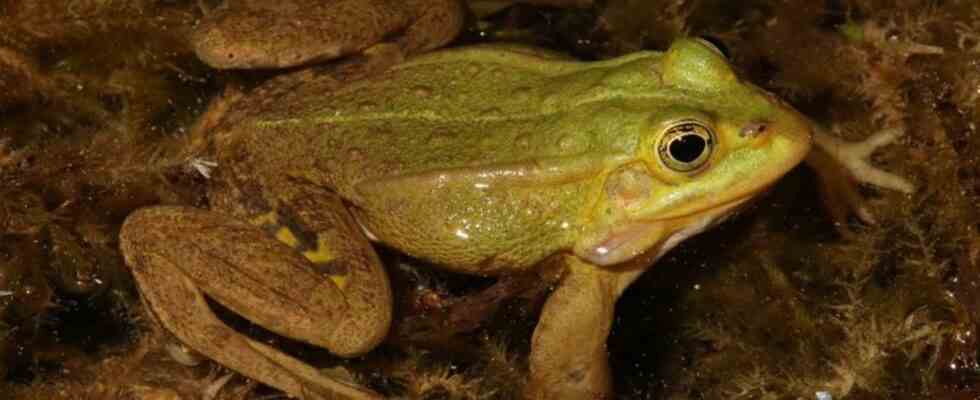biodiversity
Rare small water frog is the amphibian of the year 2023
The small water frog has been named “Lurch of the Year” by the German Society for Herpetology and Terrarium Science (DGHT). photo
© Axel Kwet/DGHT/dpa
Small amphibian, big award: little is known about the small edible frog. And it’s difficult to pinpoint. That got the experts on the scene.
The small edible frog is rare, little researched – and next year it is also the amphibian of the year. The aim of the award is to promote the protection of the species and to draw attention to the deficits in research, said the German Society for Herpetology and Terrarium Science (DGHT), based in SalzInhibitordorf in Lower Saxony.
The small water frog (Pelophylax lessonae) is colored grass green, but there are also color variants in blue-green or brown. The species is more at home in smaller and nutrient-poor waters such as forest bog ponds. However, this smallest form of green frog in Central Europe looks very similar to the pond frog. Therefore it can only be determined with certainty by specialists about the shape and size of the heel hump.
“It’s not easy with the water frogs in Germany,” says DGHT Managing Director Axel Kwet from Fellbach near Stuttgart. Three externally very similar species inhabited the shore zones. Better known is the common pond frog, which attracts attention in early summer with loud concerts at the garden pond. “Even biologists are not always able to differentiate between the two species – especially since the larger marsh frog is a third representative in Germany,” says Kwet.
As a rule, the small edible frog does not appear alone, but almost always forms mixed populations with the pond frog. “In many cases, only the genetic differences enable a reliable identification of the European edible frogs, and in the past the three native species were usually simply combined as an edible frog complex,” says Kwet. That is why too little is known about how widespread the small edible frog is and how endangered it is.
The species is listed as the only species in the “Endangerment of unknown extent” category in Germany’s Red List of amphibians. From the point of view of the DGHT, the population of the species is slowly declining because there are fewer and fewer spawning waters such as moors, ponds, swamps or ditches.
According to the DGHT, it has more than 5,000 members worldwide. The association is committed to researching amphibians and reptiles (herpetology), to competent keeping and breeding, and to species and nature conservation.

